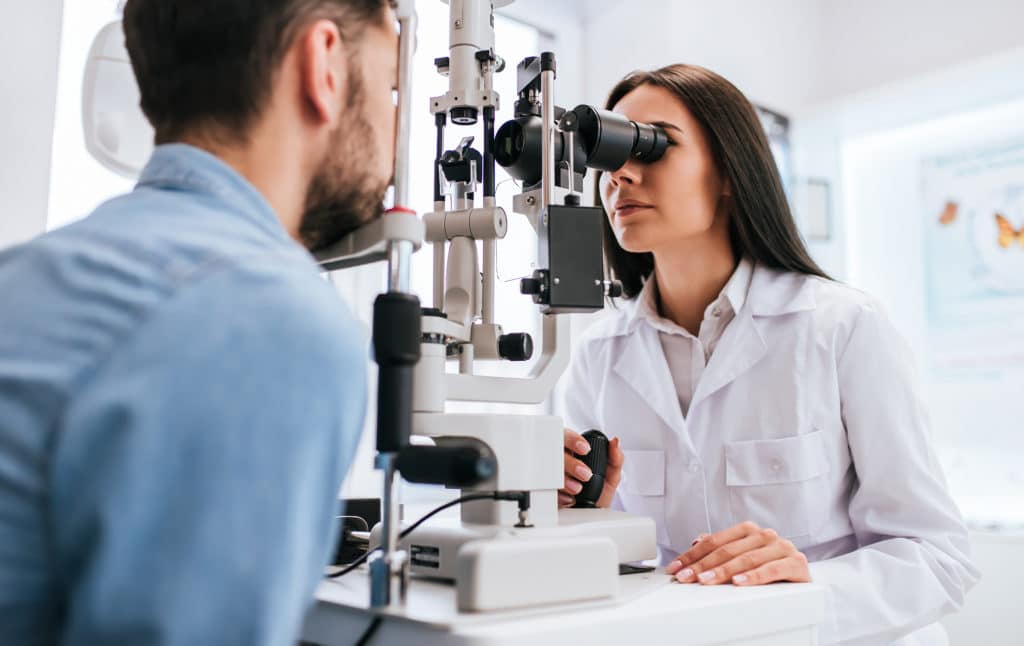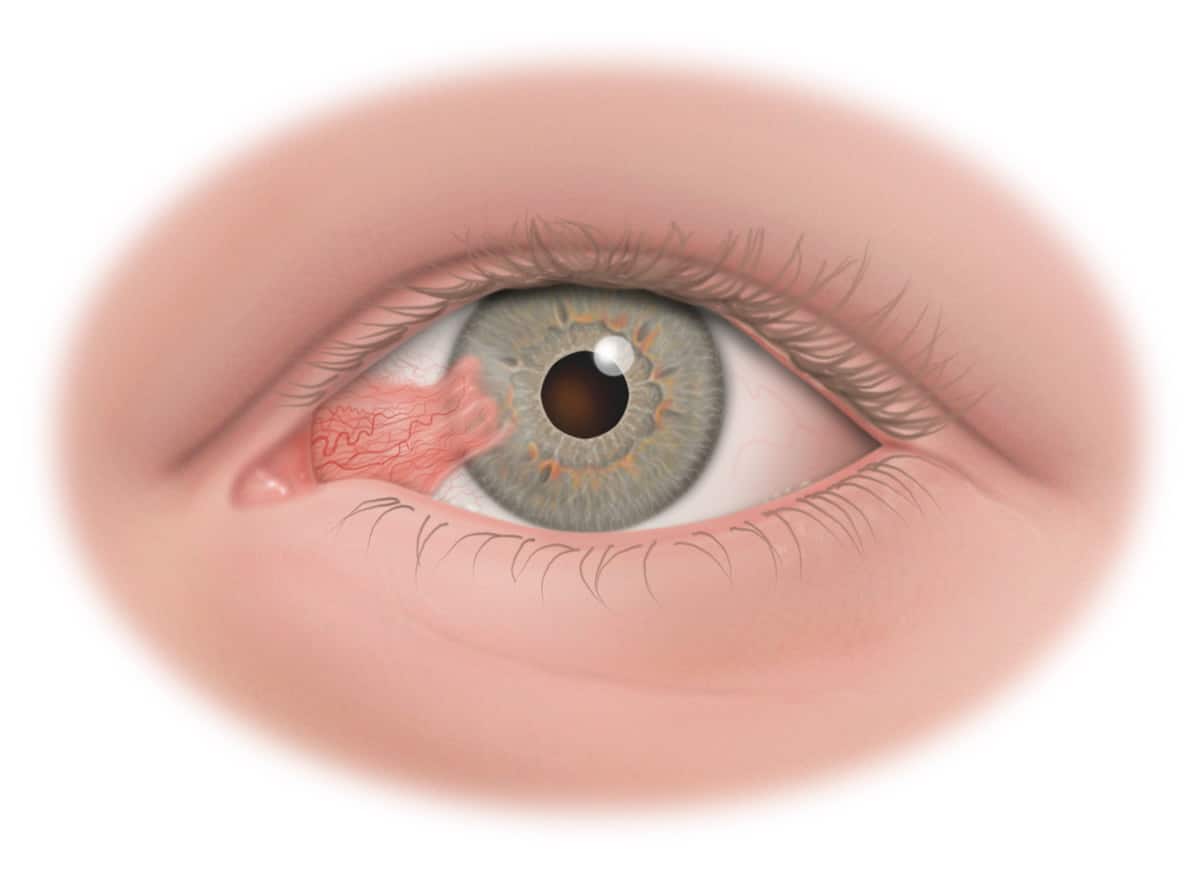Pterygium Overview & Treatment Options
in Stockton, Modesto, & Manteca, CA
SCHEDULE AN APPOINTMENT
If you would like to learn more about Pterygium Overview & Treatment Options
in Stockton, Modesto, & Manteca, CA call 1-800-244-9907 to make an appointment at Central Valley Eye Medical Group.
A pterygium is a fleshy triangular tissue that grows over the cornea, usually on the inner corner of the eye. Sometimes, it grows big enough that it interferes with vision. As the pterygium develops, it may alter the shape of the cornea, causing astigmatism.
Pterygium FAQ
Please click on any of the questions below to view their answer!
How common is a pterygium?
Pterygium is a common condition, although exact numbers are difficult to pinpoint. Some studies have found the prevalence to be over 10 percent across the world, with the highest rates in low altitude countries. There’s data showing pterygium increases as you move toward the tropics and in the equatorial zone. For us in sunny California, rates would probably be higher than in less sunny locales.
What are the symptoms of a pterygium?
What causes a pterygium to form?
These growths occur on the conjunctiva, the mucous membrane that covers the white portion (and the cornea) of the eye. It usually is shaped like a wedge, with the wider part of the wedge at the outside of the eye. There isn’t an exact causal link for a person to develop a pterygium, but it is thought that these growths form due to too much exposure to the sun’s UV rays. There also seems to be a relationship with windy climates and sand and pollen.
That explains the colloquial term for pterygium — Surfer’s Eye.
How is a Pterygium Diagnosed?
Chances are, you’ll notice a pterygium. Your eye doctor can also diagnose it during a routine eye exam.
How is pterygium surgery performed?
For pterygium surgery, the patient is placed under local anesthesia — both light oral sedation and local anesthesia on the eye itself. Your Central Valley Eye Medical Group surgeon carefully peels away the pterygium and removes a portion of the surrounding conjunctival tissue. Next the area where the growth was removed is scraped with a blade and an abrasive burr to remove any remaining vascular attachments that may remain where the growth was. Then a tissue graft is taken from underneath the upper eyelid and placed on the excision site. It is placed with an adhesive mixture, usually thrombin and fibrinogen. This precludes the need for sutures.
Using this graft reduces the risk of recurrence dramatically. This used to be a problem with pterygium surgery, as the underlying white was left exposed so it could heal, and recurrence rates approached 50 percent.
Am I a candidate for pterygium surgery?
Pterygium is non-cancerous and often develops very slowly. At Central Valley, we see patients who have pterygium, but don’t feel they need or want surgery. We can prescribe eye drops or ointment to reduce the irritation for these patients. This can be a different case if the growth becomes larger. A large or growing pterygium will often cause a gritty, itchy, or burning sensation, or the feeling that you have something in your eye. The growth can also become inflamed reddening the white.
In more serious cases, a pterygium invades the cornea. This can actually distort the shape of the front surface of the eye, causing astigmatism and other issues that can affect the patient’s vision.
In all of these cases, surgery is necessary to remove the growth.
Are you awake during pterygium surgery?
Yes, patients are awake, but they receive light oral sedation and the eye is numbed with local anesthetic. There is not any pain or sensation during the procedure.
What is recovery like after pterygium surgery?
These procedures do not take a long time, usually just 20-30 minutes. Afterwards, we may have you wear an eye patch for one to two days, but that can vary by the patient. You’ll have some soreness for the first week following surgery, and there may also be redness for the first couple of weeks. Your eye will return to normal appearance within 2-3 weeks. You can usually return to work and normal activities in a few days.
It’s important to really concentrate on eye protection for the first 12 months after your surgery. Most pterygium regrowth happens during this period. Always wear wraparound sunglasses when outdoors.
Why should I choose Central Valley Eye Medical Group to treat my pterygium?

- Glaucoma
- Retina
- Oculoplastic surgery
- Neuro-ophthalmology
- Cornea and refractive surgery
Patient Testimonials
- Central Valley Eye has a very professional staff and works hard to make sure you get in and out quickly but also efficiently and everyone is so nice there. The many doctors on staff makes it easier for you to be seen and get on with your day. They make sure everything stays cleans and wipe everything down after it is used and before they use it again.
– S.M.
- “This was my first time at Central Valley Eye. The staff was great and Dr. Magallanez was very friendly and made me feel comfortable during my exam. I will be going back for visits in the future.” – K.K.
SCHEDULE AN APPOINTMENT
If you would like to learn more about Pterygium Overview & Treatment Options
in Stockton, Modesto, & Manteca, CA call 1-800-244-9907 to make an appointment at Central Valley Eye Medical Group.



